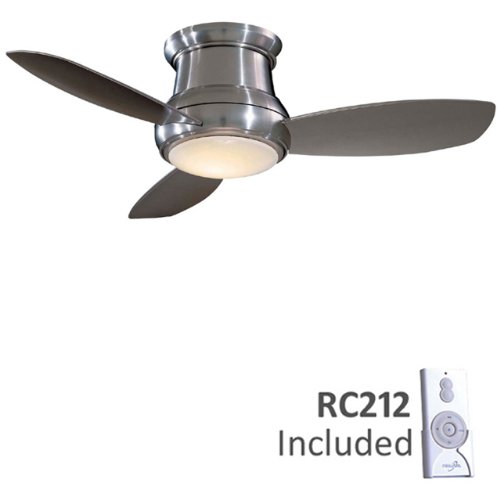Ceiling fans can help alleviate both the heat and the climbing energy bill. By circulating the air ceiling fans move warm air toward the ceiling and into attic vents while creating a "wind-chill" effect, which adds to the cooling sensation.
Air conditioners are not known to be very energy efficient. Even the most advanced units use more power than other appliances in most homes. Annually air conditioners use almost 20% of the kilowatt-hours produced in the United States. In other words, air conditioners alone in the United States are responsible for the consumption of 207,0692,000 tons of coal, 23,074,000 barrels of oil, and over 137,924,800,000 cubic feet of natural gas (based on 2006 national statistics). That staggering figure translates directly to an increased energy bill and money out of your pocket.
Most ceiling fans use the same amount of power as a 75-100 watt light bulb. For such a small power usage a fan can make a home or office feel 8-10F degrees cooler. According to Florida Power and Light, ceiling fans throughout a home can reduce energy bills by up to 40%.
While serving an energy saving function, fans can also accentuate the style and decor in your home or office. Ceiling fan innovation and style have come a long way.
What to look for when buying a Ceiling Fan:
At first glance it may be hard to see why one fan costs and another costs 0. Part if it may have to do with style and appearance, but beyond that the quality of the higher priced fans are generally superior. Quality fans pay attention to blade angle, use higher quality internal components and are better engineered. Cheaper fans will probably function reasonably well at first, but they can quickly begin to generate noise, and wobble. Wobbling in a fan further speeds up the wear and tear on a fan.
Higher quality fans also move more air than a low quality fan of the same size. Ideal blade angle for a traditional ceiling fan is 12-16 degrees. Most cheap fans have a blade angle of 10 degrees or less. On the same size fan this small difference can make a difference of the cheaper fan moving 40% less air. In other words, a cheap fan with 10 degree blades designed to cool a room effectively cools a room roughly half as large.
Fan Sizes and Location:
Traditional fans should be hung in the center of a room. Fan blades should be 7-8 feet from the floor for optimum air circulation. Low profile fans, for lower ceilings, and lengthening stems, for higher ceilings are generally available with fans to ensure they are mounted at their ideal height.
Below a chart shows the approximate size fans should be based on room size
Room Size-------------------------Fan Size
64 square-feet or smaller---------32-inch or smaller
100 square-feet or smaller--------34-inch or 36-inch
144 square-feet or smaller--------38-inch to 42-inch
225 square-feet-------------------44-inch to 46-inch
400 square-feet-------------------48-inch to 54-inch
485 square-feet-------------------56-inch
600 square-feet-------------------58-inch to 60-inch
Nontraditional Fans:
Directional fans, as the name implies, are stationary fans designed to cool a specific location or area. Some directional fans swivel to cool a greater area. Generally directional fans have stronger motors and sharper blade angles to move air more aggressively, but otherwise follow the same general quality guidelines as the traditional fans. Directional fans can be great to further cool a room that already has a traditional fan or on it's own.
Rotational Fans are a hybrid of Traditional and Directional fans. The fan is ceiling mounted like a traditional fan, but in place of fan blades a horizontal stem is attached to directional fans on either end. These directional fans rotate around the ceiling mount and are adjustable to different angles as desired. It has been claimed that rotational fans move the air most effectively, however the movement of air is the objective and which fan is the right fan is a matter of personal choice.
Lastly, an often-overlooked benefit to ceiling fans is they also help with heating. Most fans have a switch that will change the direction of the blade rotation from pulling air from below toward the ceiling (usually clockwise rotation) to moving the warm air from the ceiling toward the rest of the room (usually counterclockwise direction). Generally the fan will be set to a slower setting to accomplish this without any "wind chill" effect, but it is a proven and undeniable benefit.
 | Price : $269.95
| Price : $269.95










